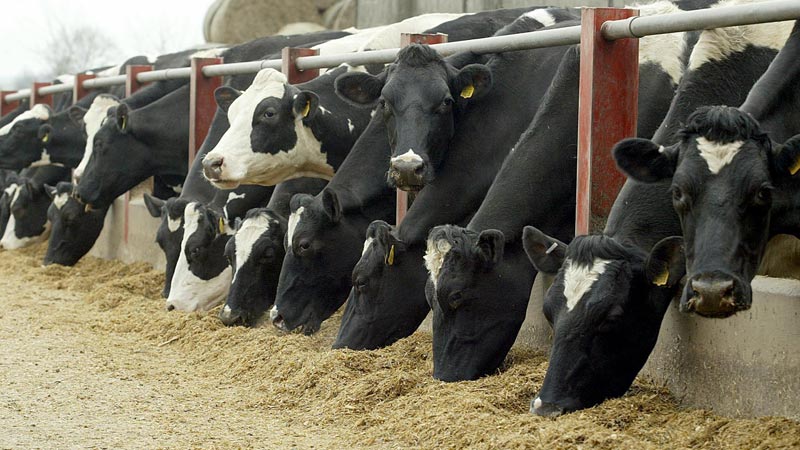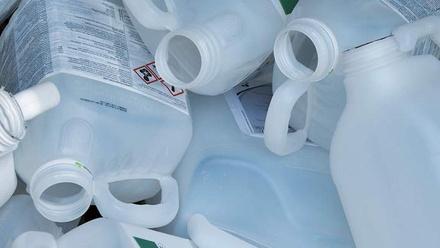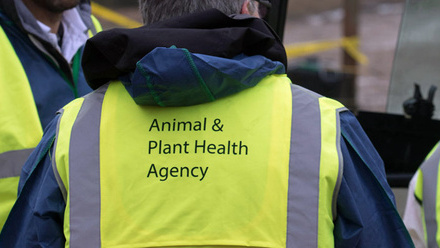FAQs: Bovine Spongiform Encephalopathy (BSE) - what is it and how is it monitored?

Find information and answers to frequently asked questions on Bovine Spongiform Encephalopathy (BSE), including the cause of the crisis in the UK, its impact on both animal and human health, and the stringent measures put in place to prevent its recurrence.
What is BSE?
Bovine Spongiform Encephalopathy (BSE), colloquially known as "mad cow disease", is a fatal neurodegenerative disorder affecting cattle.
It is caused by the abnormal accumulation of misfolded proteins in the brain and spinal cord, leading to spongy tissue.
Symptoms of affected animals include changes in temperament (nervousness or aggression), abnormal posture or difficulty standing, loss of body condition without signs of a reduced appetite, and decreased milk production.
Typically, affected cattle do not show signs of BSE until they’re at least four or five years old. There is no vaccine to prevent BSE nor any treatment for affected livestock, meaning they must be destroyed.
In the late 1980s and 1990s there were major concerns over its potential transmission to humans who ate contaminated beef products.
When was BSE a problem in the UK?
What was the cause of BSE?
The cause of BSE in the UK can be traced back to the feeding practices in the 20th century.
In an attempt to increase livestock productivity, cattle were fed protein derived from the meat and bone meal of other cattle including potentially infected animals.
This practice inadvertently introduced prions, misfolded proteins which cause BSE, into the cattle food chain.
The consumption of contaminated feed led to the gradual build up of prions in the UK's bovine population, ultimately resulting in a widespread BSE outbreak in the late 1980s and 1990s.
History
Rendered meat by-products have been used in ruminant animal production since the early 1900s, the vast majority of which contained both soft tissue and bone.
Meat and bone meal was reported in both scientific and popular farming journals to be of high nutrient economic value.
Its use was widely researched in the UK and around the world. In the UK, its safety was regulated by legislation.
During the Second World War, the Government laid down a minimum inclusion rate of 5% “animal protein-rich substances” to help produce enough food to feed the nation.
The relatively small extent to which rendered meat by-products were used in livestock feeds was largely down to their unpalatability, with pigs and poultry unlikely to consume such feed products compared with plant protein sources such as wheat, barley and soya.
What controls were put in place to prevent further BSE outbreaks?
While it was legal and commonplace to feed protein derived from cattle meat and bone meal to other cattle at the time, the BSE crisis exposed the risks associated with such practices.
Sweeping changes in livestock feed regulations, standards and monitoring systems are made as a result.
Today, feeding any animal products to food producing animals is tightly regulated including:
- A ban on feeding proteins back to the species from which they were produced, with the exception of milk and eggs
- A ban on feeding animal products to ruminants such as cattle, sheep and goats, excluding milk
- Restrictions on feeding processed animal protein (PAP) from land-based animals to food-producing animals
These comprehensive controls are laid down in European Union Retained Regulation 999/2001 on the prevention, control and eradication of certain transmissible spongiform encephalopathies (TSEs), one of which is BSE.
See the official guidance on the GOV.UK website for details.
Assurance schemes give confidence
Major changes included the creation of the AIC Services trade assurance schemes such as the Feed Material Assurance Scheme (FEMAS), the Universal Feed Assurance Scheme (UFAS) and the Trade Assurance Scheme for Combinable Crops (TASCC) in the late 1990s.
These schemes were set up to provide safe food and animal feed and ensure that the risk of a food or feed safety incident is minimised. AIC Services' feed trade assurance schemes form a vital part of the assured supply chain which reduces risk as much as possible.
FEMAS provides an assurance system to make sure that feed ingredients destined for UK livestock meet safety requirements, as defined by legislators and industry. UFAS assures that livestock feed meets legal safety requirements, as well as the needs of the supply chain.
These schemes dovetail with UK livestock assurance schemes, such as Red Tractor which was created in 2000.
Watch the video below to learn more about how these schemes keep food and feed safe, and the rigorous checks in place to make sure standards are maintained.
How are BSE cases monitored in the UK?
BSE is a notifiable disease in the UK, which means all suspected cases must be reported to the Department for Environment, Food and Rural Affairs (Defra).
Since 2001 the UK Government has run an annual monitoring programme for transmissible spongiform encephalopathies (TSEs) including BSE.
Under this robust surveillance programme, approximately 100,000 BSE tests are carried out each year.
Cattle older than 30 months or born in Romania, Bulgaria or any non-EU country that are slaughtered for human consumption must be tested for BSE before entering the food system.






